
How to Use Modulo Sensor Oxigeno Disuelto / Dissolved Oxygen: Examples, Pinouts, and Specs
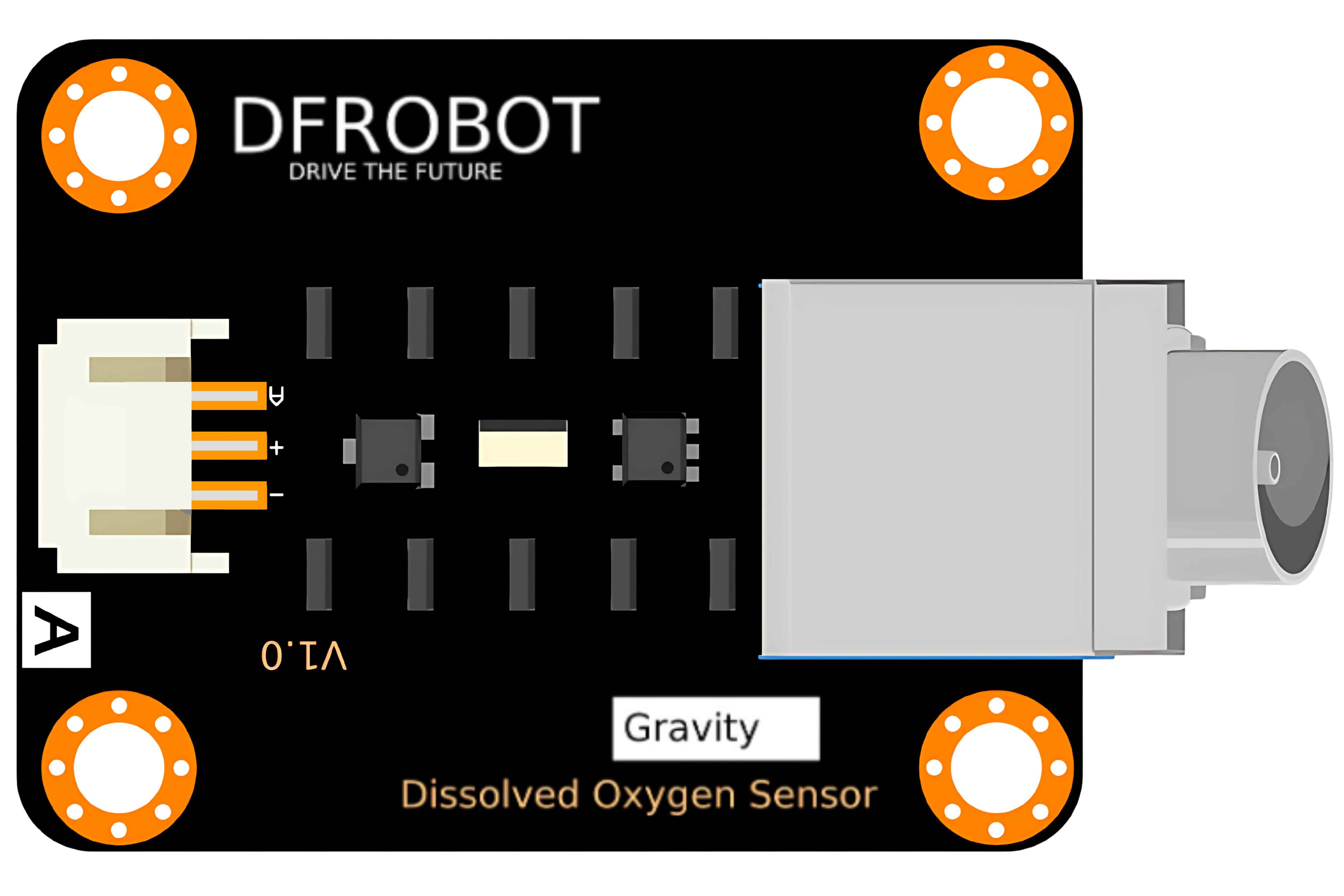
 Design with Modulo Sensor Oxigeno Disuelto / Dissolved Oxygen in Cirkit Designer
Design with Modulo Sensor Oxigeno Disuelto / Dissolved Oxygen in Cirkit DesignerIntroduction
The Dissolved Oxygen Sensor Module is an electronic device designed to measure the concentration of dissolved oxygen (DO) in aqueous solutions. This sensor is crucial for various applications, including environmental monitoring, aquaculture, water treatment, and research in aquatic biology. By providing accurate and real-time measurements of DO levels, the sensor helps in assessing the water quality and ensuring the health of aquatic ecosystems.
Explore Projects Built with Modulo Sensor Oxigeno Disuelto / Dissolved Oxygen
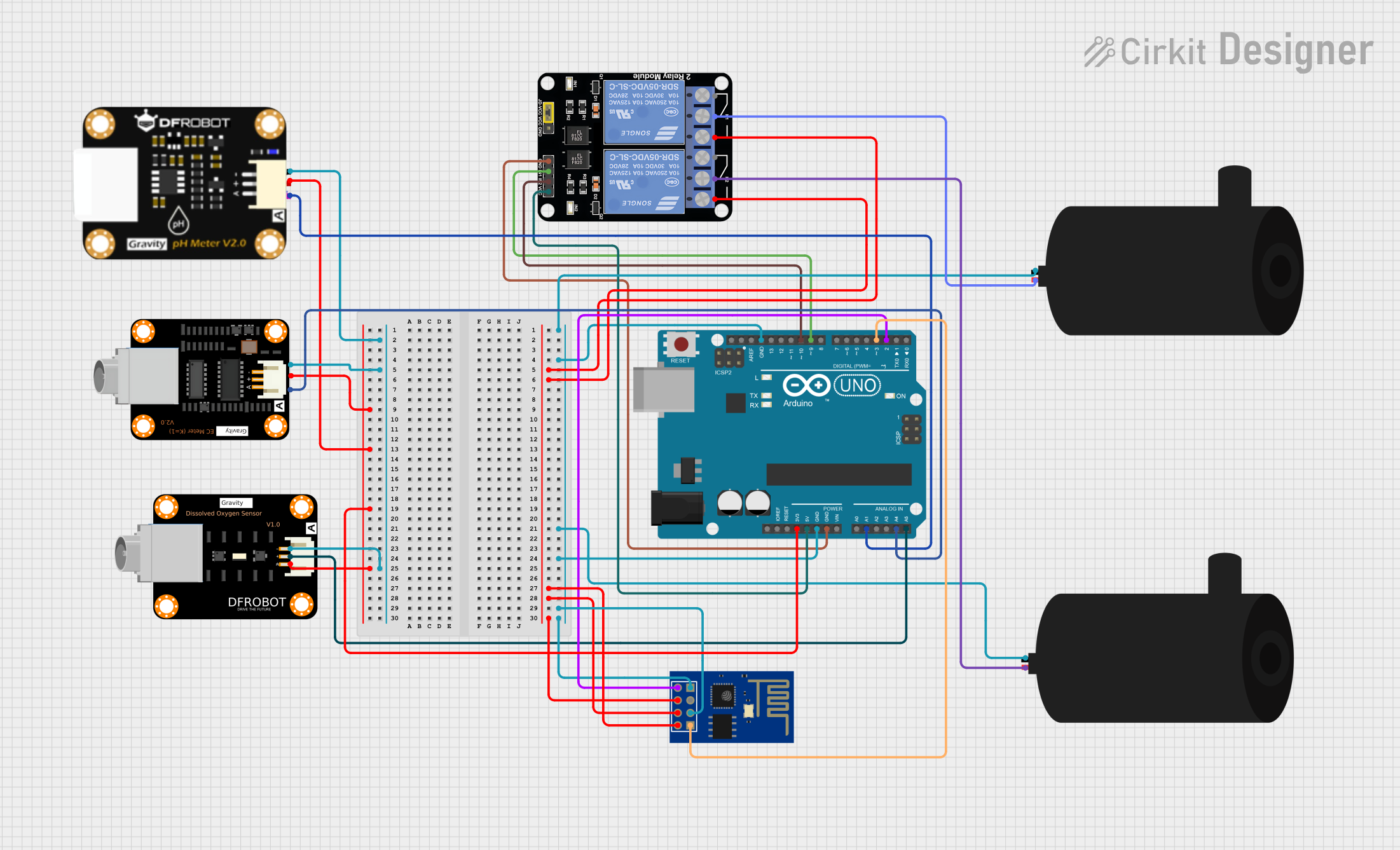
 Open Project in Cirkit Designer
Open Project in Cirkit Designer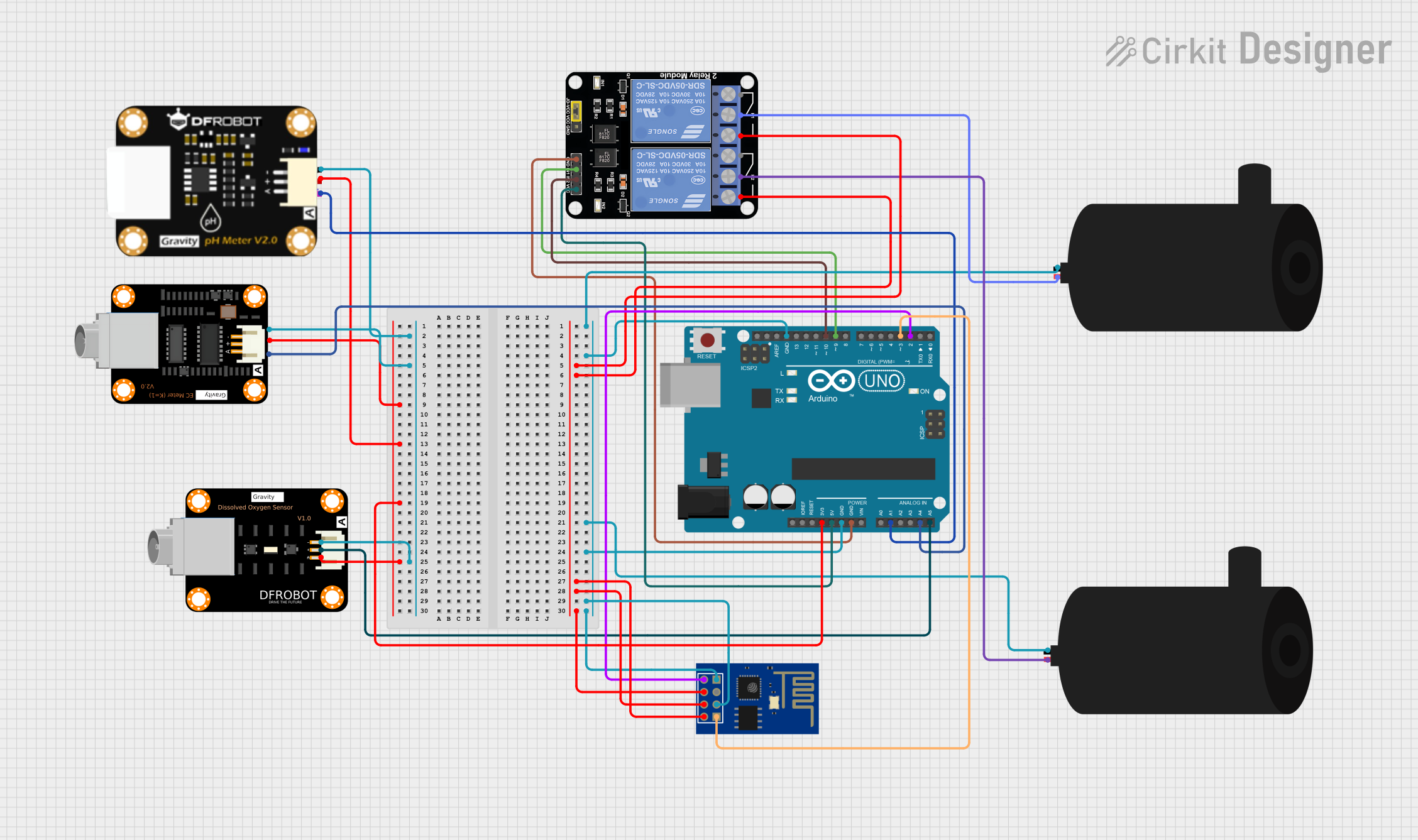
 Open Project in Cirkit Designer
Open Project in Cirkit Designer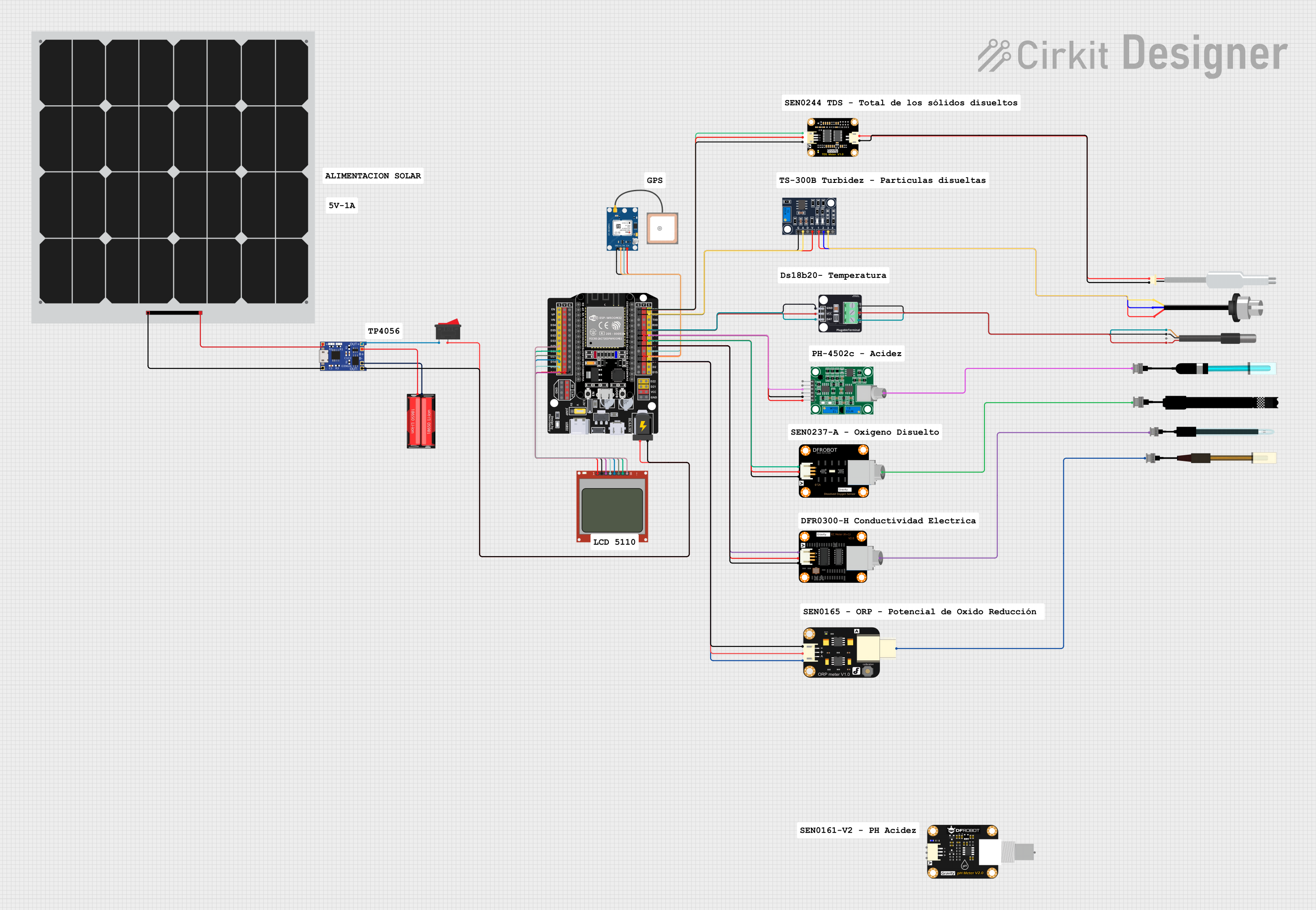
 Open Project in Cirkit Designer
Open Project in Cirkit Designer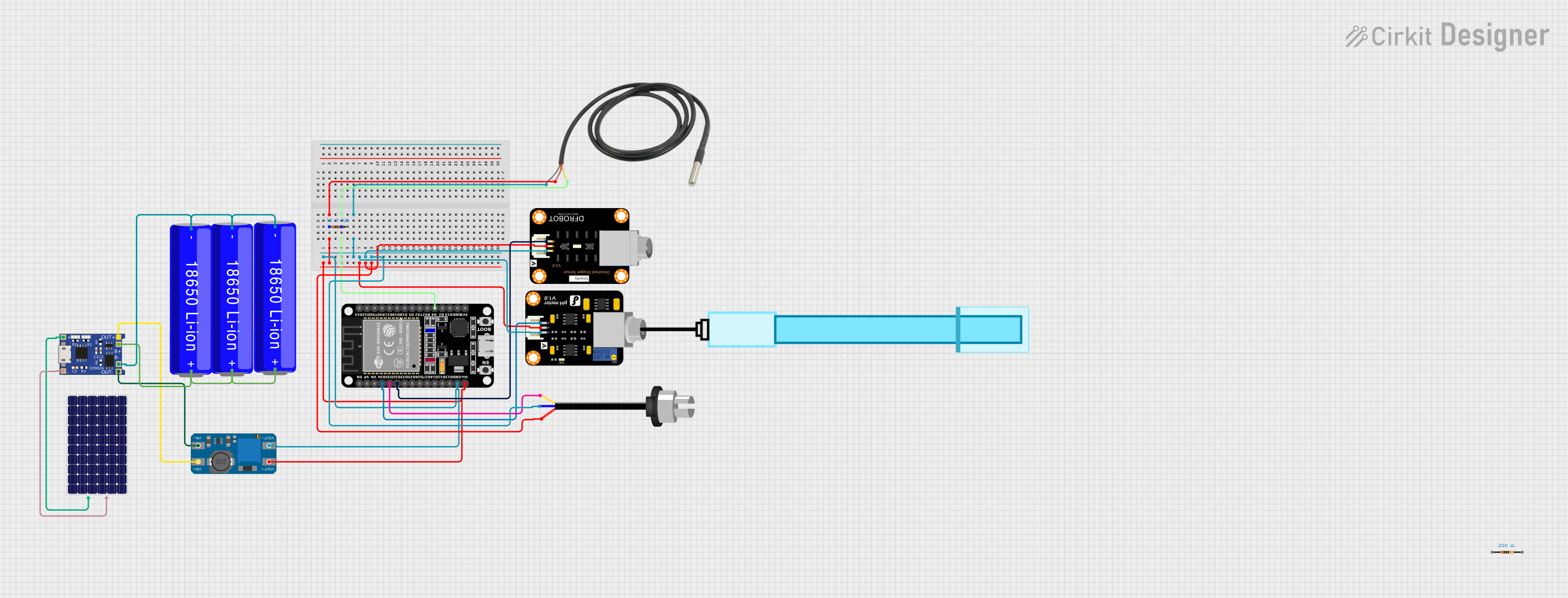
 Open Project in Cirkit Designer
Open Project in Cirkit DesignerExplore Projects Built with Modulo Sensor Oxigeno Disuelto / Dissolved Oxygen

 Open Project in Cirkit Designer
Open Project in Cirkit Designer
 Open Project in Cirkit Designer
Open Project in Cirkit Designer
 Open Project in Cirkit Designer
Open Project in Cirkit Designer
 Open Project in Cirkit Designer
Open Project in Cirkit DesignerTechnical Specifications
Key Technical Details
- Operating Voltage: 3.3V to 5V DC
- Output Signal: Analog (0-3.0V)
- Measurement Range: 0-20 mg/L (ppm)
- Accuracy: ±0.3 mg/L
- Response Time: ≤ 60 seconds
- Operating Temperature: 0°C to 50°C
- Calibration: Two-point calibration (0 mg/L and air-saturated water)
Pin Configuration and Descriptions
| Pin Number | Pin Name | Description |
|---|---|---|
| 1 | VCC | Power supply (3.3V to 5V DC) |
| 2 | GND | Ground |
| 3 | SIG | Analog signal output (0-3.0V) |
| 4 | TEMP | Temperature sensor output (optional use) |
Usage Instructions
Integration with a Circuit
- Power Supply: Connect the VCC pin to a 3.3V or 5V power source and the GND pin to the ground of your system.
- Signal Output: Connect the SIG pin to an analog input on your microcontroller (e.g., Arduino UNO) to read the DO levels.
- Temperature Compensation (Optional): If accurate temperature readings are necessary, connect the TEMP pin to another analog input on your microcontroller.
Best Practices
- Calibration: Calibrate the sensor regularly using a two-point calibration method for accurate measurements.
- Placement: Ensure the sensor is fully submerged in the liquid and avoid touching the sides or bottom of the container.
- Maintenance: Clean the sensor's membrane cap periodically to prevent biofouling and ensure accurate readings.
Example Code for Arduino UNO
// Define the analog pins for DO and temperature readings
const int DO_PIN = A0;
const int TEMP_PIN = A1;
void setup() {
Serial.begin(9600); // Start serial communication at 9600 baud rate
}
void loop() {
int doValue = analogRead(DO_PIN); // Read the dissolved oxygen value
int tempValue = analogRead(TEMP_PIN); // Read the temperature value (optional)
// Convert the analog reading to DO concentration in mg/L
float doConcentration = doValue * (20.0 / 1023.0);
// Print the DO concentration to the Serial Monitor
Serial.print("Dissolved Oxygen: ");
Serial.print(doConcentration);
Serial.println(" mg/L");
// Add temperature reading and conversion if necessary
// ...
delay(1000); // Wait for 1 second before the next reading
}
Troubleshooting and FAQs
Common Issues
- Inaccurate Readings: Ensure the sensor is calibrated correctly. If the issue persists, check for any biofouling on the membrane cap and clean it as needed.
- No Signal Output: Verify that the sensor is properly powered and that all connections are secure. Check the integrity of the sensor's cable and connections.
FAQs
Q: How often should I calibrate the sensor? A: Calibration frequency depends on usage, but it is generally recommended to calibrate the sensor before each critical measurement session or at least once a month.
Q: Can the sensor be used in saltwater? A: Yes, but the presence of salt can affect the sensor's readings. It is important to perform calibration in the specific type of water in which the sensor will be used.
Q: What is the lifespan of the sensor? A: The lifespan can vary based on usage and maintenance, but with proper care, the sensor can last for several years.
Remember to provide clear, concise, and engaging documentation to ensure it is valuable to both beginners and experienced users.